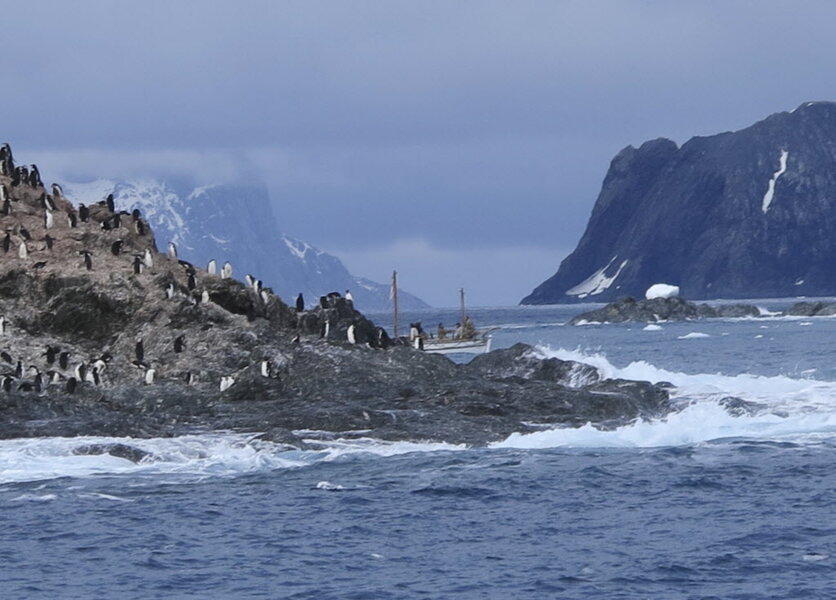What happened to Shackleton's sunken ship?
Loading...
In 1914, Ernest Shackleton set sail from England aboard Endurance, bound for the southernmost of the world’s oceans. The ship's name was a telling one, fitting the explorer's commitment to doing something big and dangerous after another adventurer, three years earlier, had reached the South Pole first, scooping his goal. After that, the only thing to be done was to go farther – literally, farther: Shackleton planned to make the South Pole a mere pit stop as he and his team crossed the entire continent on foot.
But in January of 1915, the Endurance stuck fast in the Weddell Sea’s ice. And in September, succumbing to the squeeze of the ice, the ship went down. Shackleton and his crew would go on to make a months-long and 800-mile mission to South Georgia. They would endure; they would make it back to England.
But what about Endurance? Is the ship still in the Southern Ocean? And in what condition?
A team of scientists studying the geographical distribution of wood-eating worms and whale bone-eating worms has now offered a new clue as to what Shackleton’s ship might look like after about 98 years on the ocean floor.
The researchers, whose findings are published in Proceedings of the Royal Society B, submerged a sample of wood and whale bones into waters off the Antarctic shelf, near Deception Island, for one year. When the samples were pulled up, the bones were packed with worms that represent two new species of Osedax worms, a category of whale bone-eating worms that are sometimes saddled with the alarming moniker “zombie worms” – or, perhaps even more worrying, just “bone-eating worms,” without the “whale” qualifier.
But the wood was clean, absent of the Xylophaga mollusk that has since 1733 been documented feasting on doomed ships all around the world. In fact, just the Baltic and the Black seas had previously been known to be free of the animal, a destructive one to historical preservation. Scientists now believed that the Antarctic Circumpolar Current might be a barrier to mollusks infiltrating the Southern Ocean and its wooden wreckage, acting something like a velvet rope cordoning off prized artifacts from museum visitors.
While the scientists cautioned that the experiment lasted just one year, and that the mollusks might need more time to settle on a submerged slab of wood, they also said that the results were encouraging news for the archaeological survival of the shipwrecks dotting this unforgiving corner of Earth: Shackleton’s Endurance might have endured the rot and wear of almost 100 years beneath the bone-cold ocean.
"The results do indeed suggest that the Endurance, and other wooden shipwrecks of historical interest, may indeed be relatively well preserved in Antarctica waters," said Craig Smith, a professor of oceanography at the University of Hawaii. "There may a trove of historical information to be gained by locating some of these old wrecks."
The worms found on the whale bones are two new species called Osedax antarcticus and Osedax deceptionensis, a find that broadens the believed habitats of the unusual worms to even the world’s unfriendliest corridors. Until now, Osedax worms had been found only as far southward as the Falkland Islands, though they had been documented in the Arctic, suggesting that cold water might not be a barrier to their survival.
Osedax worms are identifiable by their streaming red tips, like a mane of red-gold hair whipping upwards at the front of a speedboat. The worms don’t have eyes, stomachs, or mouths, and so must burrow their roots deep into a whale’s bones to access the digested lipids that helpful bacteria have made accessible to them there.






